Fall Flowers - Discover 22 Most Popular Autumn Flowers
Beautiful and well-groomed flowers are a pride of every garden. Many people prefer flowers that bloom in spring and summer. But as it turns out, certain plant species can be a garden's decoration until late fall. Check the most popular fall flowers and add them to your collection.

Mums (Chrysanthemum)
Mums (Chrysanthemum) are also known as chrysanths. It’s one of the most popular species found in yards during fall.
Chrysanthemums are hardy plants. They like bright places, although don’t appreciate too strong sunlight. They can endure low temperatures of 4-6°C (39.2-42.8°F). The soil in which they grow should be relatively moist. Don’t water them too frequently, but make sure their soil doesn’t get completely dry either.
In many countries, chrysanthemums symbolize death and are brought to graves on All Saint’s Day in November.
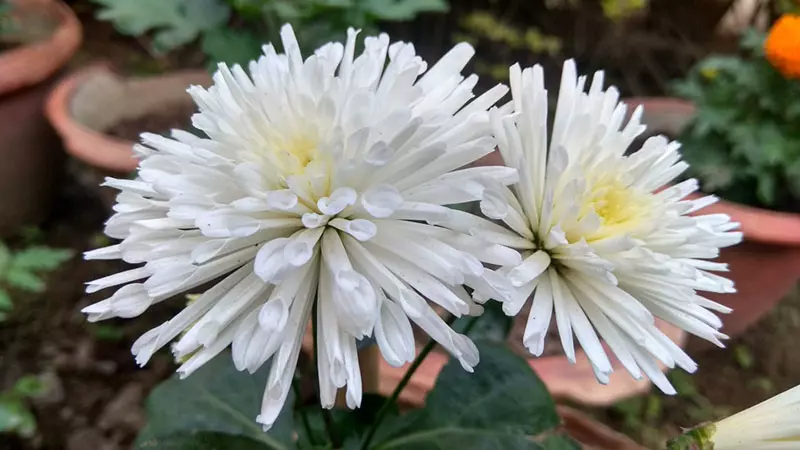
Common heather (Calluna vulgaris)
Common heather (Calluna vulgaris) prefers loose, sandy, and slightly acidic soils. But it’s not a very demanding plant. It can grow even in poor grounds. The soil should be relatively moist. These plants prefer growing in sun.
Heathers are great not only for flowerbeds, but also rock gardens. What’s more, they can also be planted in containers. You can use these shrubs as a balcony or patio decoration.
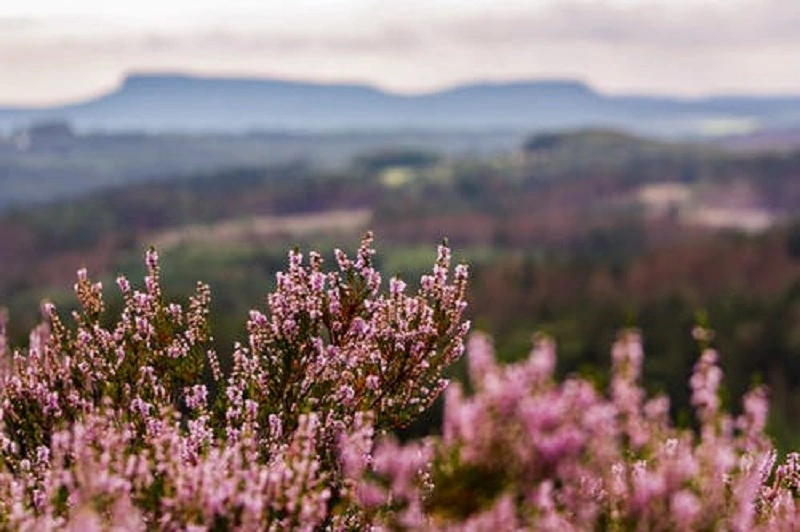
Morning glory (Ipomoea)
Morning glory (Ipomoea) is a plant with decorative leaves. It looks beautiful in arrangements with other plants. You can pick from different color variants of these plants.
Here are the most popular Ipomoea colors:
- dark-blue-purple,
- bright green,
- dark-red-purple.
Ipomoea prefers growing in partial shade or moderate sun. It doesn’t like dry soils, so it’s important to keep it relatively wet. Unfortunately, this plant is quite prone to pest attacks. Make sure to use preventative sprays – especially against aphids.

Canna lily (Canna)
Canna lily (Canna) is a very majestic fall flower which develops beautiful, intense colors. It likes sunny places, although the soil should be wet all the time. For this reason, remember about regular watering if the temperatures rise.
Canna lily, despite its majesty over other fall plants, is not difficult to manage. It means that it grows well regardless of the soil you plant it in. Nonetheless, slightly acidic soil is most preferred by this plant.

Japanese thimbleweed (Anemone japonica)
Japanese thimbleweed (Anemone japonica) is a plant from the buttercup family, originating in Japan. It’s a beautiful fall perennial which grows well in flowerbeds. It grows up to 120 cm (3.94 ft) tall – it’s best to combine it with similar plants, otherwise shorter plants could get dominated.
Japanese thimbleweed prefers growing in slight shade. Make sure the soil is quite wet and rich. This plant is resistant to low temperatures but not to frost – it requires protection in winter.
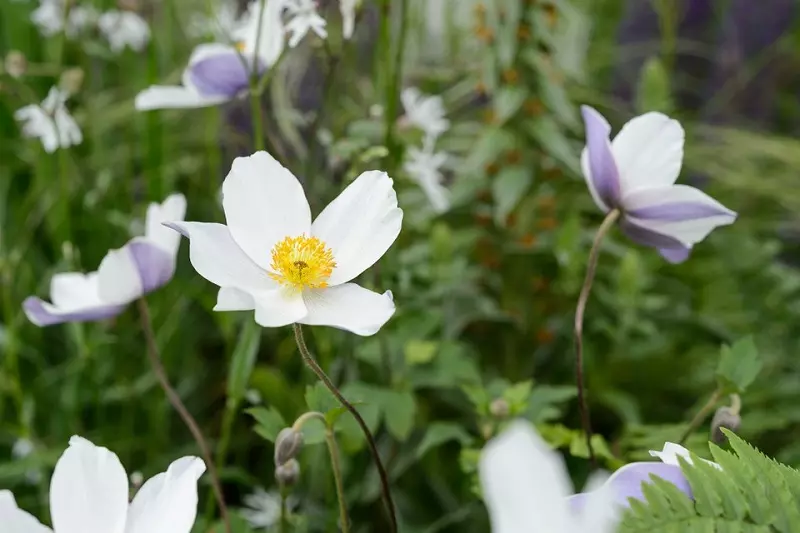
Clematis (Clematis)
Clematis is a beautiful climber plant which has various colors. It needs a sunny spot to grow properly. It makes the plant bloom more intensely, and the colors are much more vibrant.
The soil for a clematis should be moist but also with a good drainage system. Water cannot stand in it. The soil itself should be slightly acidic.
Here are the most popular colors of clematis – fall flowers:
- purple,
- dark blue,
- red.
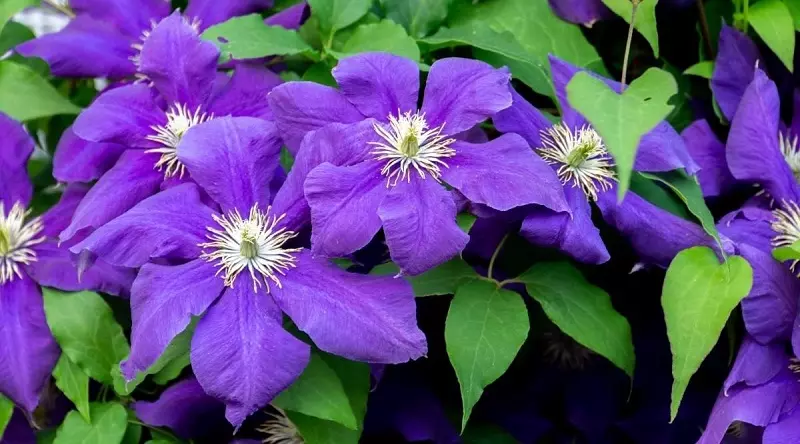
Silver lace vine (Fallopia aubertii)
Silver lace vine (Fallopia aubertii) is another beautiful vine which decorates fall gardens. This plant is characteristic for its rich blooming. The small white flowers also develop a beautiful scent thanks to which spending time outside is more pleasant.
Silver lace vine is not demanding regarding the soil. This plant can grow in basically any ground. But make sure to strengthen the plant using special mineral fertilizers or manure. It should be done once every 2 years – in early spring.
The best spot for a silver lace vine is moderately sunny or partially shaded. This plant is also very easy to propagate. You can harvest some cuttings in late summer between August and September. They take root pretty quickly.
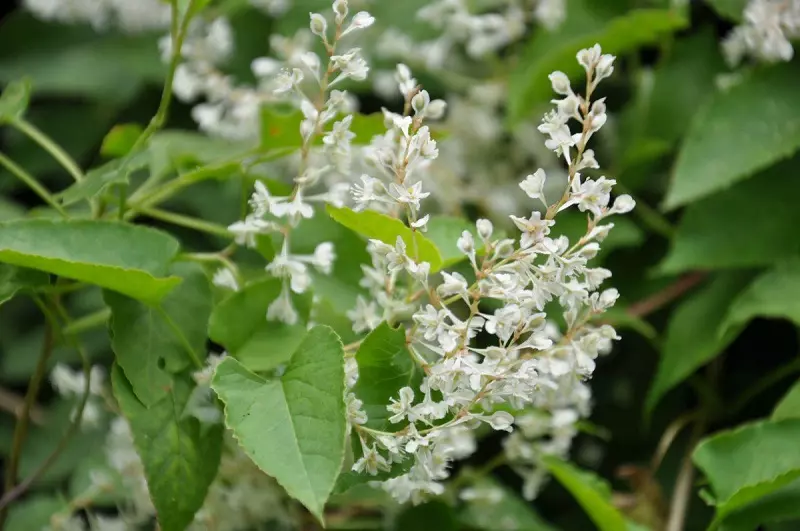
Goldenrod (Solidago hybrida)
Goldenrod (Solidago hybrida) is a very characteristic and tall plant which can reach even 200 cm (6.56 ft) of height. It’s distinct for its microscopic yellow flowers which develop on its medium-length branches.
Goldenrod is very easy to take care of. It grows practically in any soil and doesn’t have any special needs. What’s more, this plant is resistant to droughts and low temperatures. You don’t have to secure and cover it for winter. The best location for goldenrod is moderate sun or partial shade.
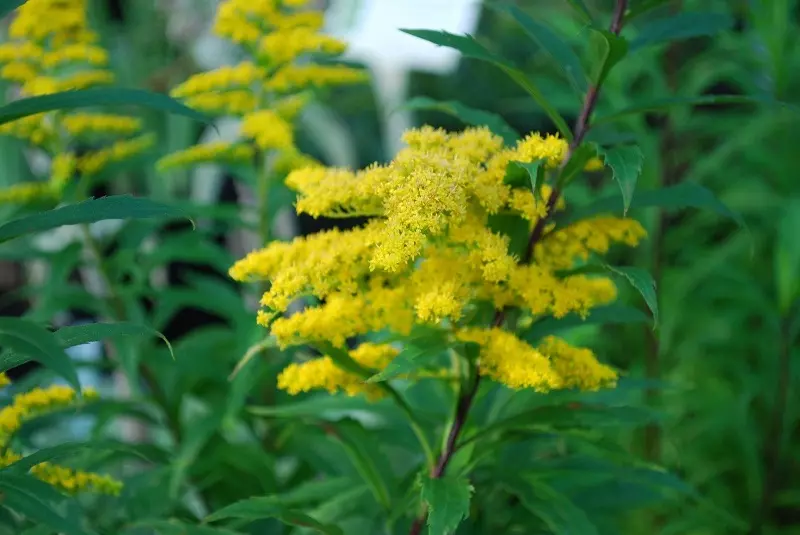
Annual phlox (Phlox drummondii)
Annual phlox (Phlox drummondii) is a beautiful fall annual of unusual looks. This plant is not very tall. It grows up to 25 cm (9.84 in). It has characteristic singular flowers of various colors. These can be:
- white,
- pink,
- salmon,
- red,
- purple.
Annual phlox is quite difficult to grow – especially regarding the soil. It should be rich and permeable. The plant also requires regular watering and a sunny location.
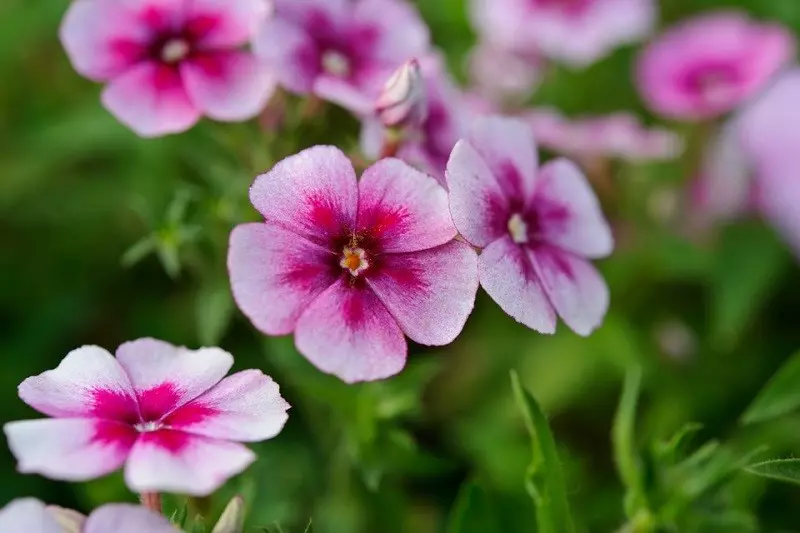
China aster (Callistephus chinensis)
China aster (Callistephus chinensis) is a very interesting plant which appears commonly in gardens. It looks perfect in flowerbeds with other fall perennials. One can create beautiful arrangements with it.
China aster requires fertile, loose and humus-rich soil. It grows well if moderate moisture and sunlight or half-shade are provided. Cream, white, red and pink asters are the most popular ones. You can also find these fall plants in blue and purple colors.
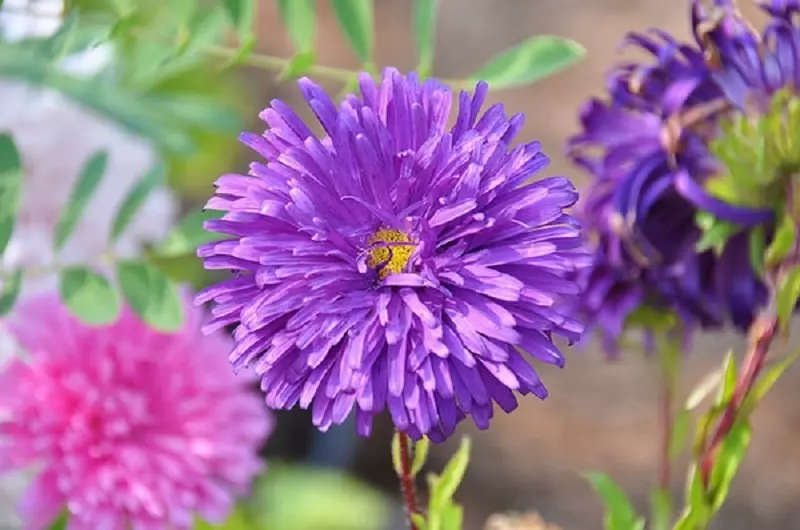
Spiny spiderflower (Cleome spinosa)
Spiny spiderflower (Cleome spinosa) is either an annual or bi-annual. It’s characteristic for its exotic appearance. For this reason, spiny spiderflowers are not only grown in flowerbeds, but also used for bouquets. Depending on the conditions it grows in, the plant can reach 90-120 cm (0.82-3.94 ft).
For proper growth, the plant requires fertile, compost-rich and permeable soil. Make sure it has access to water and full sun. Spiny spiderflower blooms for a long time – from July to October, when the first frosts come.
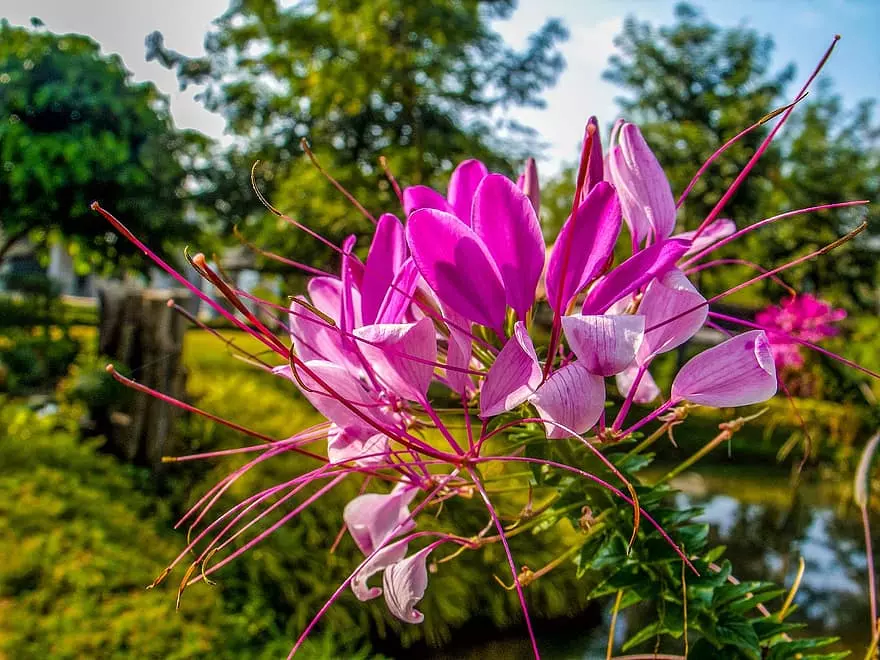
Pendant amaranth (Amaranthus caudatus)
Pendant amaranth (Amaranthus caudatus) is a climbing, very broad plant with peculiar red stems, which are considered flowers. It’s not difficult to grow, although it requires a certain type of soil. The ground should be rich, preferably in humus. It’s also good if the soil is slightly acidic.
Depending on the conditions provided to the plant, it can grow from 40 to 100 cm (1.31-3.28 ft) tall. Unfortunately, this species in most cases is an annual, which is its biggest drawback.
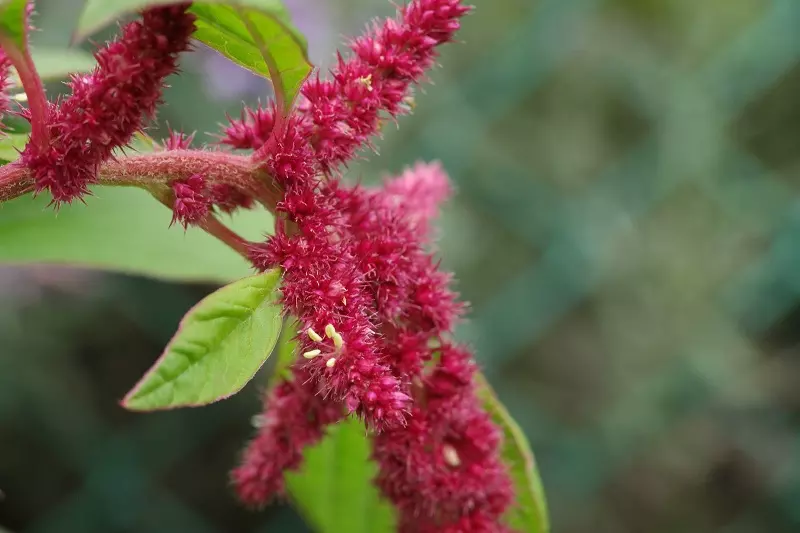
Moss rose (Portulaca grandiflora)
Moss rose (Portulaca grandiflora) is gaining popularity in contemporary gardens. It offers many possibilities. It’s perfect not only in flowerbeds, but also in rock gardens. Moss roses are also great fall plants for pots placed on balconies and patios. The universal aspect of this autumn plant is a result of its low height – it grows no taller than 20 cm (7.87 in).
Moss rose grows perfectly well in any soil. Regardless, loose and fertile soil of a slightly acidic pH is the best. Also, make sure to plant this fall flower in a sunny spot, and don’t water it too excessively, as it might lead to root rot or fungal diseases such as grey mold.

Common hollyhock (Althaea rosea)
Common hollyhock (Althaea rosea) is one of the tallest fall flowers cultivated in gardens. It can grow up to 2.5 m (8.2 ft) tall. It can be grown in flowerbeds, but only if you plant equally tall species around. Otherwise, other plants might disappear in its shadow. Because of this, hollyhocks are usually planted in separate flowerbeds, along fences, or around gazebos.
Depending on the variety, common hollyhock blooms in different colors. Apart from classic pink, one can also find these fall flowers in colors such as:
- salmon pink,
- white,
- red.
Hollyhocks require rich, loose soil, and regular watering – especially during hot days.
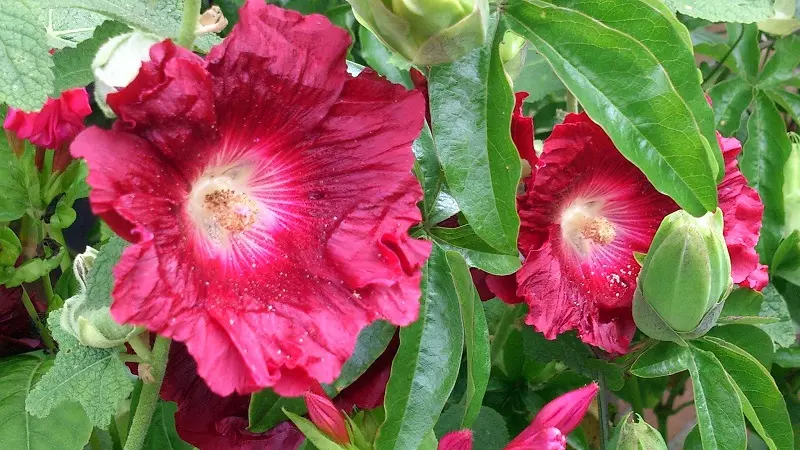
Dense blazing star (Liatris spicata)
Dense blazing star (Liatris spicata) belongs to the larger autumn flowers and amazes with its unusual appearance. The plant grows up to 1 meter (3.28 ft) tall. It develops characteristic purple, white, and pink floral plumes. The flowers release a pleasant scent which floods the entire area.
The soil for dense blazing stars should be relatively dry, rich in humus, and lightweight. Make sure the pH of the ground is neutral. This fall plant prefers sunny locations, although it can be planted in shade as well.
Blazing stars can be grown in flower beds, as well as in containers decorating your balcony or patio.

Meadow saffron (Colchicum autumnale)
Meadow saffron (Colchicum autumnale) is a plant that many call a crocus. But this species is a fall flower, which is indicated in its latin name.
Meadow saffron can grow in flower beds and in rock gardens. The flowers have intense pink and purple colors, although some varieties are white. The maximum height of this plant is 30 centimeters (11.81 in) – we recommend arranging it with similar species.
This fall perennial is not very demanding. Just make sure the ground is loose enough. Its quality doesn’t matter. If the conditions are suitable, and the location is sunny, the plant begins blooming at the end of August. The blooming continues until the end of October.
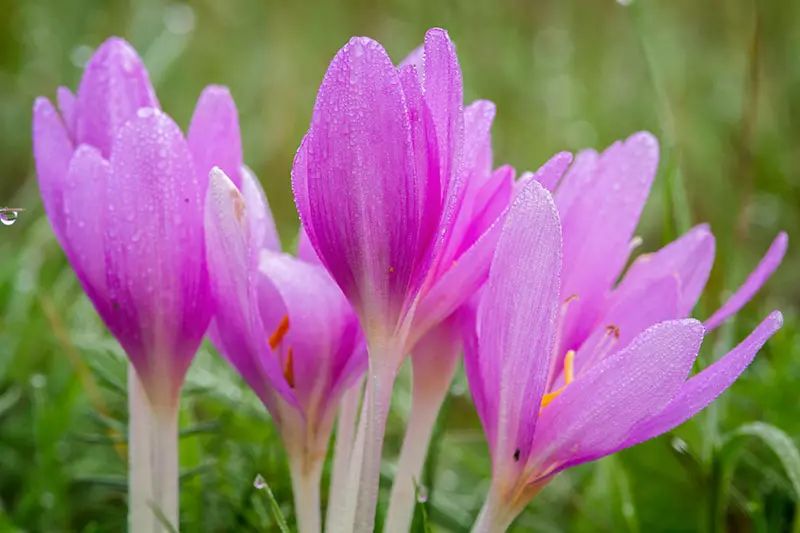
Trumpet vine (Campsis radicans)
Trumpet vine (Campsis radicans) is a climbing plant, also known as hummingbird vine. It develops characteristic long branches that can reach even 10 meters (32.81 ft) in length. As estimated, trumpet vine’s growth rate might be even 4 meters (13.12 ft) per year, which means it reaches its maximum length in 3 years on average.
Trumpet vine has very characteristic flowers. But one has to be patient with this fall plant, as it usually blooms after 2-3 years from planting it in the garden. It’s important to provide it with proper conditions. It means the plant needs fertile soil and a sunny spot. It also requires regular watering. Don’t let the soil get dry.
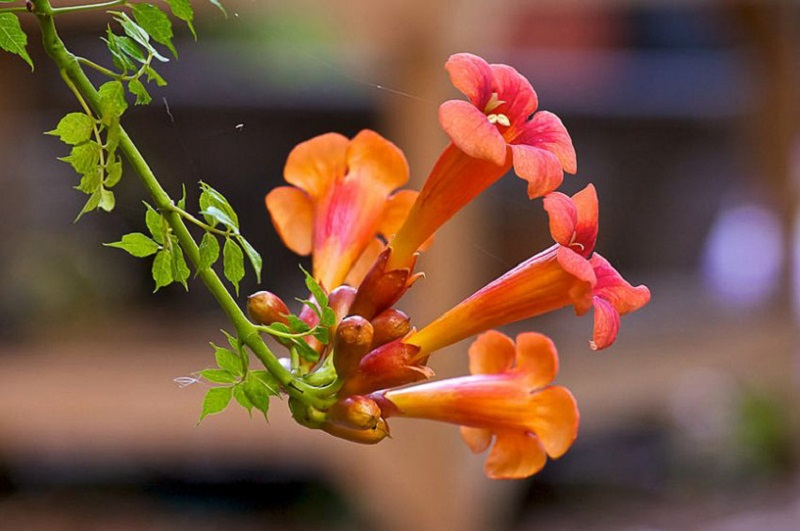
Summer ragwort (Ligularia dentata)
Summer ragwort (Ligularia dentata) is one of the plants from the aster family, which is also indicated by its appearance. The species blooms in two colors – orange and yellow. Interestingly enough, summer ragwort grows very tall – it can reach up to 150 cm (4.92 ft) in height.
This fall flower prefers growing in half shade. Planting it next to ornamental shrubs is a good idea. Summer ragwort can also grow in the vicinity of a pond, as it prefers damp, clay soils. The plant doesn’t have any special requirements and doesn’t need feeding.
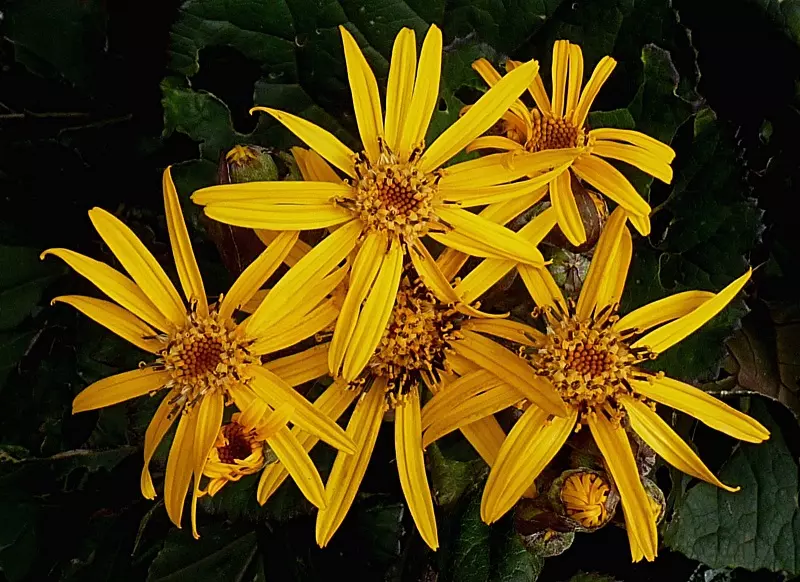
Torch lily (Kniphofia x hybrida)
Torch lilies (Kniphofia x hybrida) are one of the exceptionally popular garden plants in the recent years. Depending on the provided conditions, they can reach from 70 cm (2.3 ft) up to even 140 cm (4.59 ft) of height. This fall flower prefers sunny and warm locations. Because of its height, it should be planted in spots secured from the wind.
Torch lily doesn’t require anything special as for the soil conditions. Even partially sandy ground is suitable. But regular watering is essential. Note that the soil should have good drainage. Standing water might cause root rot.

Common foxglove (Digitalis purpurea)
Common foxglove (Digitalis purpurea) has its natural habitat in mountainous regions. In addition to its quite impressive height, it has characteristic large flowers and big oval leaves.
It’s a durable plant which doesn’t require any special care. It’s a perfect autumn flower for beginner gardeners, especially considering that it can endure both droughts and light frosts. Just make sure to fertilize it – at least once every two months. We suggest using mineral or organic fertilizers, e.g. manure.
Those who like the appearance of common foxgloves, can decide on different color variants. One can choose from the following options:
- white,
- yellow,
- pink,
- lilac,
- violet,
- blue,
- purple.
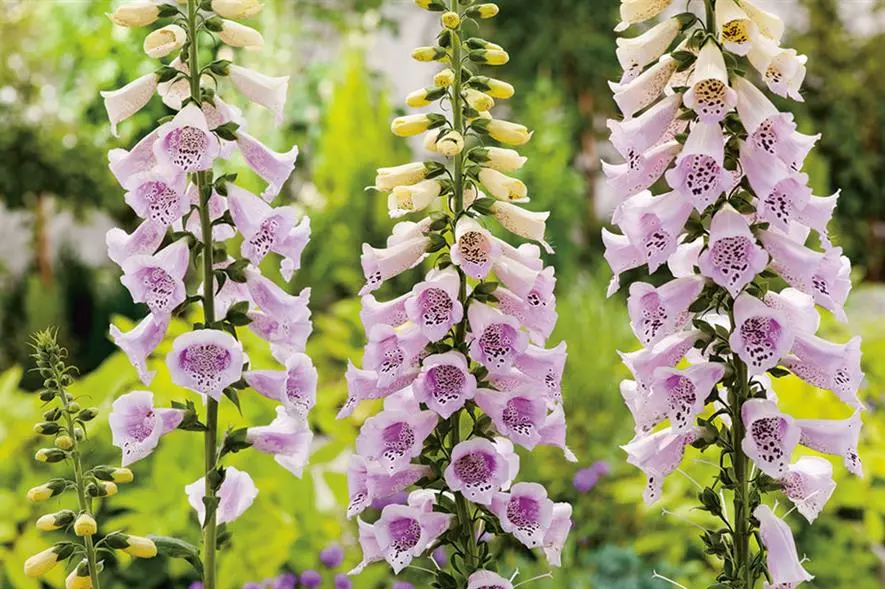
Sweet alyssum (Lobularia maritima)
Sweet alyssum (Lobularia maritima) is a small plant which doesn’t grow taller than 30 cm (0.98 ft). It’s characteristic for its dense habit, many small flowers during blooming season, and intense smell.
Although sweet alyssum is not a difficult fall flower, and it grows perfectly well in any soil, make sure to fertilize it regularly. Also, full-sun is the best location for this plant. Regular watering is important as well.
Sweet alyssum with white flowers is the most typical variety. But there are also purple and pink plants of this type.
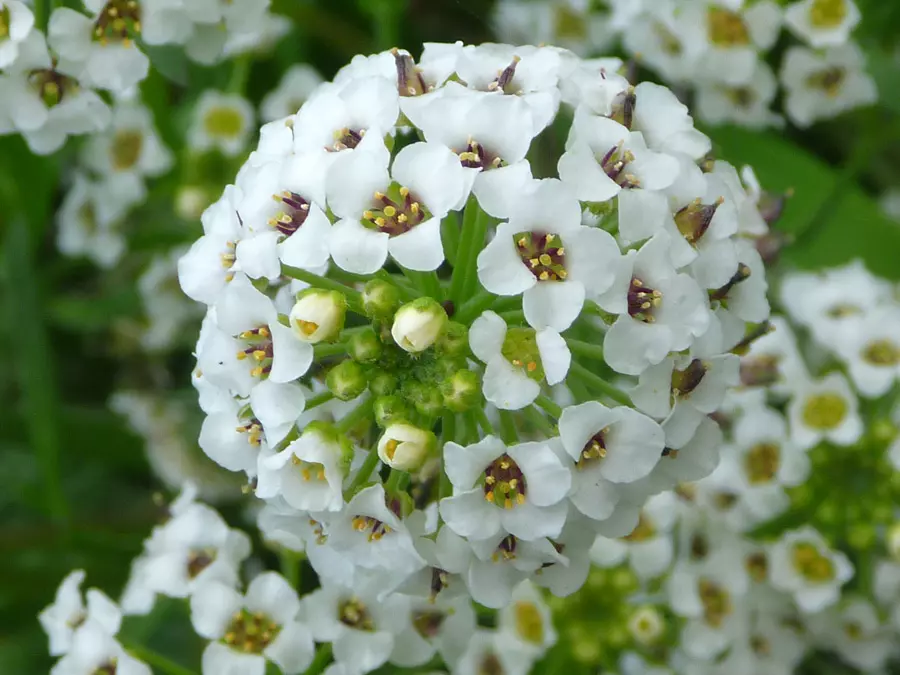
Faassen’s catnip (Nepeta × faassenii)
Faassen’s catnip (Nepeta × faassenii) is a plant that evokes many controversies, mostly because of how it affects cats. Nonetheless, it’s a beautiful autumn flower which stands out from regular plants. Interestingly enough, classic catnip’s scent is not recognizable by humans. But this variety smells intensely.
Sandy or humus-rich soil is the best for this plant. It’s good if it’s permeable and relatively dry.
Although catnip can be planted in flower beds, it can also grow in containers. What’s more, this plant has healing properties. It soothes upset stomach and makes a perfect ointment for injuries.
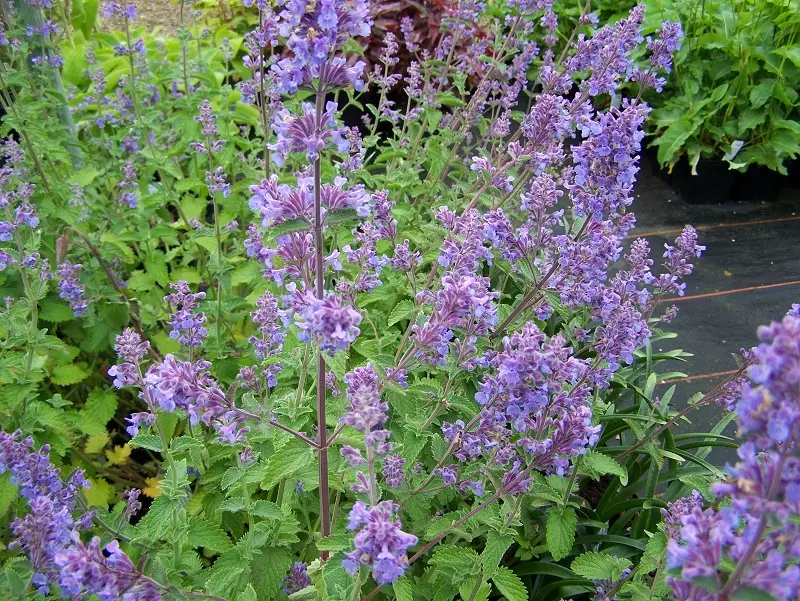
📍 What fall flowers to plant in fall?
There are many popular plants that bloom in fall. Heather, morning glory, and chrysanthemum are among them. Fall plants such as canna lily and Japanese thimbleweed are also commonly planted in gardens. If you like vines, clematis and silver lace vine are good options.
📍 What are the best fall flowers for pots?
Popular potted autumn flowers grown on patios and balconies include ornamental grasses. Cyclamens and alumroots look beautiful as well. Beginner gardeners should be successful with chrysanthemums.
📍 When to plant fall flowers?
Planting autumn flowers depends on the individual plants. Different species require different planting or sowing time. Before you pick a particular fall plant, make sure to check its needs.
Featured articles




